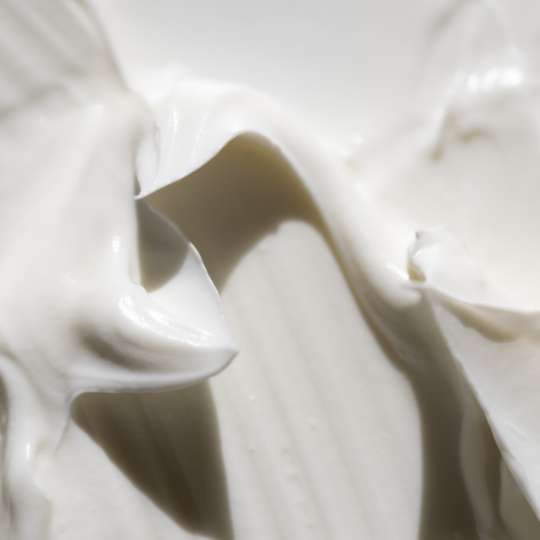

The internet is a weird and wonderful place. It’s a winding labyrinth of entertainment and information ready for you to get lost in, but not everything you encounter there should be trusted. TikTok is awash with beauty trends and while there are plenty of dermatologists, scientists and experts using the platform to share helpful tips, it’s also home to unsubstantiated advice which should be taken with at best, a pinch of salt, and at worst, with caution. We look at which Tiktok beauty trends will improve your skincare routine for the better, and which ones shouldn’t be taken offline…
TikTok beauty trends for 2022
Trend #1: Using silicone patches for fine lines
What does it involve? Smoothing the skin so that any wrinkles are pulled taut before applying a silicone patch over the top. Leave to work overnight with the aim of seeing an improvement in lines by morning.
Does it work? Silicone patches have been around for years and are traditionally used to help fade scars. They work their magic on marks by forming an additional barrier on the skin and trapping in moisture, which then creates an ideal environment for healing. Silicone patches also exert gentle pressure as well, which can help to level raised scars too.
These benefits on scars are applicable to fine lines too, making silicone patches a good short-term fix for plumping and smoothing. So, if you have an event coming up that you want to look especially fresh and well-rested for, then go ahead. But, keep in mind that it’s a bit like wearing shapewear. These patches will smooth your skin while you’re wearing them and shortly after, but they won’t make a long-term difference.
If you sleep face down, or on your side, consider wearing silicone patches while you snooze. By putting a barrier between the fabric and your skin, you can help prevent so-called “sleep wrinkles” from getting worse and stop pillow lines from becoming embedded in your skin by morning. But equally, investing in a silk pillowcase, or trying to sleep on your back with your head elevated, will have a similar (if not more beneficial) impact.
Keep in mind that in order to use silicone patches you’re going to have to sacrifice your skincare. Firstly, because we wouldn’t recommend trapping potent actives like retinal and vitamin C against the skin, and secondly as the patches simply won’t adhere to skin that’s slippery with serums.
Trend #2: Potato slices for acne
What does it involve? Taping a small piece of potato to your skin to help bring down cystic spots.
Does it work? Before we get onto the potato part, let’s first talk about the benefits of covering spots. There’s a reason why spot stickers have become so popular, and it’s partly due to the fact that they create a physical barrier between you and the spot. You can’t absent-mindedly (or intentionally) pop, pick or play with a spot if it's under wraps, which means less chance of transferring bacteria or driving inflammation. Covering a spot can also provide an element of compression, which will help to flatten blemishes.
Now, are there any benefits of using slices of potato to send your blemishes packing? The jury is still out. It’s true that potatoes are cooling and soothing, so will feel nice when applied to an angry, throbbing blemish. There are also elements within a potato which could benefit the skin. These include vitamin C (which is used in skincare to prevent post-spot dark marks) and an enzyme called catecholase (which can help to gently exfoliate). But ultimately, it is always better to use these ingredients within skincare products which have been specifically formulated for purpose. While potatoes might have a positive impact on the appearance of blemishes, they’re not a long term fix for breakouts, and the results don’t compare to a proper skincare routine.
Trend #3: Slugging
What does it involve? Using a petroleum product (like Vaseline) as the last step in your nighttime skincare routine to seal in your products and help them to absorb.
Does it work? Vaseline is what skincare experts refer to as an occlusive, which means that while it won’t add moisture to the skin, it will seal it in. Think of it like a winter coat trapping in warmth to keep you cosy. Dry, or very dry skin, will benefit from this additional layer as it needs extra help to restore and retain moisture in the skin. But, keep in mind that slugging won’t work unless you have layered moisturising ingredients beneath it.
If your skin is oily, slugging isn’t for you. The more of the occlusive you apply, the more likely you are to block your pores or find the whole experience unpleasant – especially during warmer weather. Equally, oily skin has an excess of sebum so doesn’t need extra moisture in the mix, making the process of slugging unnecessary. Focus instead on products and ingredients that help with balancing oil and decongesting the skin.
Trend #4: Skin icing
What does it involve? Applying ice, or ice-cold tools, to the skin with the aim of bringing down puffiness and redness.
Does it work? An old beauty trend under a new name, people have been icing their skin for years. Except now, instead of just doing things like rubbing ice cubes over the skin, plunging your face into cold water or keeping teaspoons in the freezer, this has become more sophisticated with the use of tools like facial globes.
Ice is used for injuries as it helps to reduce pain and swelling by constricting the blood vessels and decreasing circulation to the area. This can be beneficial to the skin too, reducing puffiness, dialling down redness and lessening the appearance of pores by narrowing them. So, if you’ve woken up to swollen under-eyes or a red, angry complexion then ice could be the answer. The impact is temporary though, and once you take the ice away from the skin then the redness and skin laxity will return. Keep in mind too that rosacea doesn’t respond well to extreme temperatures, and skin icing may contribute towards or exacerbate flare ups.
Trend #5: Moisture sandwiching
What does it involve? Layering moisturising products onto damp skin to really trap in hydration.
Does it work? Moisture sandwiching goes something like this: start with skin that’s damp from either a splash of water or from a facial mist, apply a hyaluronic acid serum and top with a moisturiser. The idea is that this series of steps will really help to seal moisture in the skin, rewarding you with a smooth, plump and hydrated complexion.
The science behind moisture sandwiching makes sense. Not only will it help to hydrate skin, but the logic of applying lighter products before heavier ones gives them optimum opportunity to penetrate the skin. If you say, applied your moisturiser first, your hyaluronic acid serum (which is lighter in texture) wouldn’t be able to make its way to the skin. Hyaluronic acid also works best when it has water readily available to draw into the skin. If there's no water to hand, it will steal this moisture from the deeper layers of your complexion – dehydrating the skin and doing the exact opposite of what you hoped for. Applying hyaluronic acid to damp skin and topping with a moisturiser will prevent it from stealing skin’s own stocks.
Read, watch and be inspired...



